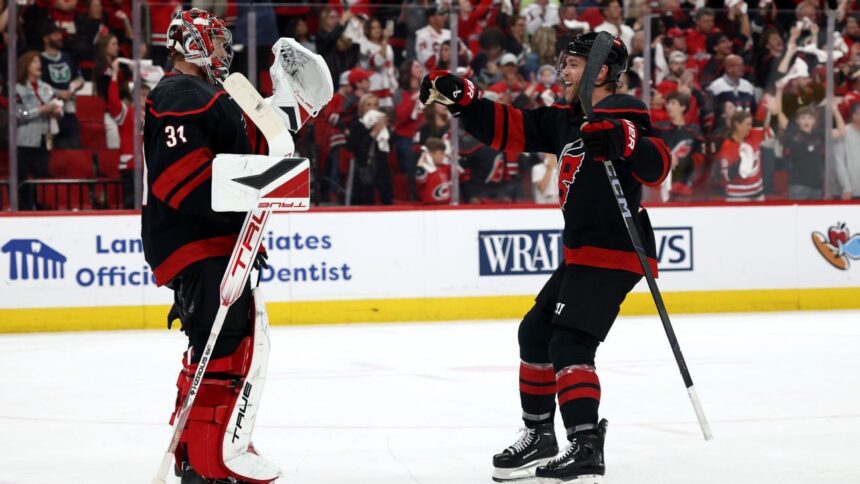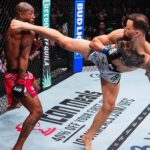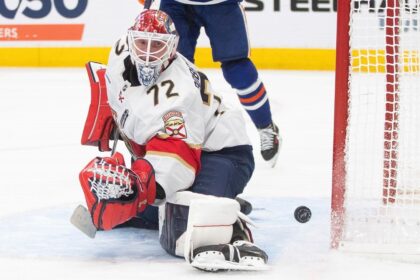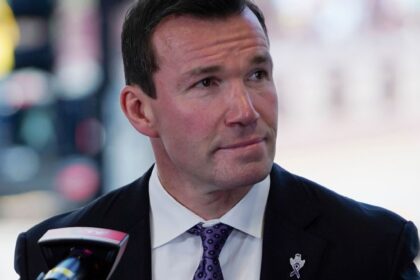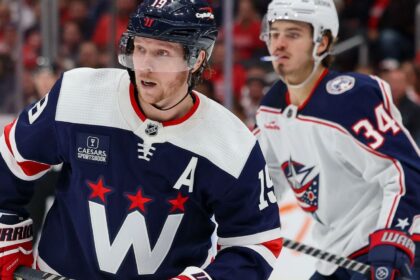The second round of the 2025 Stanley Cup playoffs has passed its midpoint, with almost all series on the verge of concluding the fourth game. What have been the most important lessons learned in this phase? Which teams and players have surprised, for better or for worse? How will all this influence the rest of the postseason?
Round Analysis
We thoroughly analyze the most relevant aspects of the second round, highlighting the surprises and trends that could define the course of the competition.
A favorable sign for the Stars?
The series between the Winnipeg Jets and the Dallas Stars still has much to be decided. However, if the Stars achieve victory and advance to the Western Conference Finals, it would be their third consecutive appearance at this stage, and the fourth since 2020. Although they haven’t won the Stanley Cup in that period, does their consistency make them the most outstanding team in the West?
The Vegas Golden Knights, champions in 2023, and the Edmonton Oilers, who were one step away from achieving it last season, are strong contenders. If Dallas reaches the next round, they will face one of these two teams. The Stars’ situation is worthy of analysis, since, since the NHL adopted the East/West format in 1994, only three teams have managed to reach the conference final three consecutive times. The Detroit Red Wings achieved it first (from 1995 to 1998), winning two Stanley Cups, and then again (from 2007 to 2009), conquering another title in 2008. Recently, the Chicago Blackhawks did it (from 2013 to 2015), obtaining two Cups.
Toronto in search of a new strategy
The Maple Leafs showed a poor performance in Game 4 against the Florida Panthers, suffering a 2-0 defeat. Florida dominated Toronto with strong pressure in the offensive zone, resulting in multiple penalties for the Leafs and preventing them from generating momentum.
If it weren’t for Joseph Woll’s outstanding performance in goal, the score would have been higher, as Toronto found no solutions against Florida’s offense. Unlike previous games, where the Leafs capitalized on counterattack opportunities, the Panthers closed their defenses to keep Toronto on the outside and improve their game against Sergei Bobrovsky.
If the Panthers manage to maintain this level, and the Leafs don’t adapt, Florida could secure their third consecutive appearance in the Eastern Conference finals. Toronto needs to make changes and have their star players elevate their performance. Mitch Marner hasn’t registered a shot on goal since his game-winning goal in Game 2, and Auston Matthews has yet to score in the second round, nor has he scored against Florida in nine postseason games.
Toronto coach Craig Berube acknowledged after the loss that he expects more from certain players. Both teams have defended their home ice so far. Toronto still has that advantage, but now the series is down to a best-of-three format. The question is: What counterattack will the Leafs launch now that the Panthers have sharpened their claws?
Confidence in Hellebuyck for the Olympics?
The question the United States team will have to answer before the men’s ice hockey tournament at the 2026 Winter Olympics is whether the games in Milan will be considered home or away. The answer could define the starting goaltender.
Connor Hellebuyck’s struggles in the Stanley Cup playoffs have reached a concerning point. Despite having won the Vezina Trophy twice and being a Hart (MVP) finalist, his regular season performance contrasts with his postseason statistics. In his last 20 playoff games, Hellebuyck has a 7-13 record, with a .866 save percentage and a 3.90 goals-against average. On the road, he has lost eight of his last nine starts, with an .835 SP and a 5.20 GAA.
After the first round against the St. Louis Blues, the expectation for Hellebuyck was to see if he could get through an away game without being replaced. Although he achieved that goal in Game 3 against Dallas, he lost again and didn’t perform well, allowing a goal by Roope Hintz and another that the NHL classified as an own goal by Alex Petrovic.
Jets coach Scott Arniel commented that Hellebuyck’s performance will be judged by his results away from home and that they need to win. In contrast, Dallas goalie Jake Oettinger has a 12-11 record with a .909 SP and a 2.63 GAA in his last 23 playoff games away from home.
The United States has a wide selection of goaltenders, but Oettinger could be the next option, having been Hellebuyck’s backup at the 4 Nations Face-Off in February. His play in this series and in other key moments, such as the Stars’ Game 7 victory against Colorado in the first round, should generate debate about the U.S. Olympic starter, considering Hellebuyck’s difficulties in decisive moments.
However, it is important to note that Hellebuyck performed outstandingly at the 4 Nations, with a GAA of 1.59 and .932 SA in three games, which raises the question: Can he be trusted more playing behind an All-Star team than with the Winnipeg Jets, regardless of where the games are played?
The Oilers’ depth could be the Golden Knights’ undoing
Seeing Adam Henrique score the first two goals in Game 4, followed by another by Evander Kane, not only gave the Oilers a 3-0 victory, but also left them one win away from their second consecutive appearance in the Western Conference Finals. This reaffirmed how the Oilers can rely on a depth that, in comparison, the Golden Knights lack.
The statistic that evidences this is that the generational duo of the Oilers, Leon Draisaitl and Connor McDavid, have only combined to score three of their team’s 15 goals. Draisaitl scored in Game 1, but the rest of the contributions, including the winning goal, came from other players. Draisaitl scored the winning goal in Game 2, but the previous four goals were scored by his teammates. In Game 3, Corey Perry scored the first two goals.
Compare them to the Golden Knights. The trio of Ivan Barbashev, Tomas Hertl, and Brett Howden scored 78 goals in the regular season, but they haven’t scored in the first four games of the series against the Oilers. Vegas’s six main defensemen scored 35 goals in the regular season, with 17 of them belonging to Noah Hanifin and Shea Theodore. This group has only scored one goal in the series.
This lack of depth in the annotation has been exacerbated by the fact that Jack Eichel, who led the Golden Knights with 94 points in the regular season, has not scored in the series. Meanwhile, the top scorer, Pavel Dorofeyev, who missed the first two games due to injury, has also not scored since his return.
Own Goals for Everyone?
Fans love to see goals, but not when they are in their own goal. In this round, we have seen some notable examples of this latter category.
In Game 3 between Dallas and Winnipeg, an own goal by Petrovic, after a long review, was what gave Dallas the lead. The night before, Draisaitl’s stick deflected a puck towards Stuart Skinner’s net, giving Vegas a goal in the last second and their first win of the series. Morgan Rielly, in Game 3 of the Toronto against Florida series, deflected a puck towards the net, reducing the Leafs’ lead to 2-1. Toronto ultimately lost 5-4 in overtime.
Although there’s no good time to score an own goal, could the timing of any of these goals have been worse? If you’ve ever wondered why “just throwing the puck at the net” is a hockey cliché, here’s your answer: because anything can happen.
Mikko Rantanen, on the road to the MVP
Pete DeBoer, coach of the Dallas Stars, in his tenth postseason, has witnessed surprising individual performances from his players. Such as Ilya Kovalchuk’s 19 points in 23 games for the Devils in 2012, or Joe Pavelski’s 14 goals in 24 games for the Sharks in 2016.
But nothing like the postseason that Rantanen is having with the Stars.
It’s the best performance I’ve witnessed from where I’m standing. But for me, it’s just getting started. He’s warming up. I think he’s on a mission.
Pete DeBoer, coach of the Dallas Stars
In 10 games, Rantanen leads the playoffs in goals (nine) and points (18). At one point, he had scored or assisted on 15 of the Stars’ 16 goals, dating back to the first round. He is the first player in Stanley Cup playoff history with five three-point games in a team’s first 10 games.
Rantanen was traded twice during a turbulent season, from Colorado to Carolina and then to Dallas, before signing an extension with the Stars. He has answered questions about his offensive ability without having Nathan MacKinnon on his team. He entered the playoffs as one of the NHL’s top scorers in recent seasons and has exceeded those expectations, being the current leader for the Conn Smythe Trophy (playoff MVP).
However, in Game 2, the Jets held him in check in their victory. Rantanen responded with a goal and two assists in Game 3.
It’s Mikko Rantanen’s time.
Ovechkin and Perry defy time
Corey Perry will turn 40 on Friday, while Alex Ovechkin will reach that milestone in September. Both are part of a group of five players aged 39 or older who have played more than one game this postseason. Suggesting that Ovechkin and Perry are having good postseason campaigns for players of their age only partially explains what they have done so far.
In fact, they are having two of the best postseason campaigns for 39-year-old players in NHL history.
Perry, a Stanley Cup winner and 38th in playoff goals, has scored five times this postseason. Ovechkin, also a Stanley Cup winner and tied with Mario Lemieux for 12th in playoff goals, has four. Both are close to the most playoff goals in a 39-year season, according to Quant Hockey. That mark is held by Jean Béliveau, with six goals in 1971.
Have the Hurricanes figured out Ovi?
Some might accuse Ovechkin’s game of being increasingly “one-note.” But when played well, it’s a very good note. And right now, the Washington Capitals desperately need more of his contributions, at least at even strength.
Ovechkin’s line has been stifled by Carolina’s defense, especially by Jaccob Slavin and Brent Burns, so far in the series, and they’ve had far fewer shot attempts and opportunities than the opposition at 5-on-5. Ovechkin and linemate Dylan Strome especially thrive on creating opportunities from zone entries, and the Hurricanes aren’t giving them much in that regard. Ovechkin is still battling for open ice and leads the Capitals in shots at even strength, but that hasn’t materialized into anything on the scoresheet; Ovechkin’s only goal in the series has been on the power play in Game 4.
Considering the Caps were defeated 4-0 in Game 3 and 5-2 in Game 4, they are looking for consistent offensive contributions to overcome the situation. This is when Ovechkin has to start turning his proverbial straw into gold again at full capacity.
Washington was fortunate in Game 2 after being outshot 33-14 by the Hurricanes, but still managed a 3-1 victory. If Carolina is finding its offensive rhythm now and starting to figure out Logan Thompson, then Washington must find ways to generate more offensive opportunities. That’s easier said than done against the Hurricanes’ suffocating collective defensive play.
Carolina is no joke
If you’ve followed the second round, you’ve undoubtedly encountered one or two jokes (or 10) about the relative quality of the Carolina Hurricanes series against the Washington Capitals compared to the other three playoff series. Perhaps you’ve made a few yourself.
Monday night’s Game 4 was the exception in what has otherwise been a hard-fought, checking series that saw four or fewer total goals scored in each of the first three games, including a 4-0 shutout by goalie Frederik Andersen in Game 3.
The Hurricanes are the Hurricanes. Coach Rod Brind’Amour doesn’t care about the entertainment value of this series or any other. His team’s mission is to vampirically suck the life out of their opponents with a combination of puck possession, defensive zone coverage, reliable goaltending, and elite penalty killing. After four games, the mission has been accomplished.
A Brind’Amour was asked about fans and media in other markets reducing the Hurricanes’ virtues to simply being a monotonous “shot volume” team.
He’s lazy. He’s lazy. Because then you’re not really watching the game. You’re picking a part of it. But there’s a method to all this. It doesn’t irritate me.
Rod Brind’Amour, coach of the Carolina Hurricanes
When the Hurricanes don’t have the puck, they’re avoiding shots: Carolina is allowing an average of 24.6 shots per game this postseason, the third-best among active teams.
This is what the Hurricanes do. This is what the Hurricanes have done. And this is what they will continue to do in the Eastern Conference Finals unless the Capitals have a surge in them. Which would be exciting. But the Hurricanes don’t care about that excitement.
Los Hurricanes no se preocupan por esa emoción.

